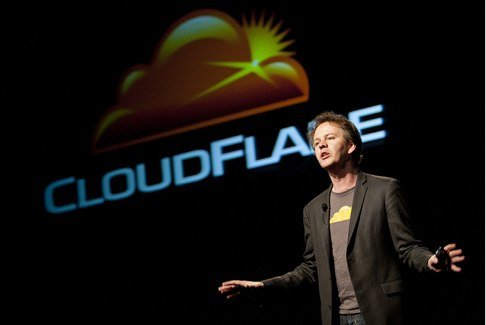What do you do with a shiny new, globally distributed network capable of serving up billions of web pages? CloudFlare CEO Matthew Prince, a graduate of Trinity College, Harvard Business School and the University of Chicago law school, decided his company was in a great position to build a bridge between the IPv4 web, which hit capacity earlier this year, and the incompatible future of the internet, IPv6.
Prince says the scarcity of new globally compatible IP adresses in some parts of the world has already caused the price of basic web hosting to soar beyond what independent innovators can afford to pay for the experiments that will define the future of the internet.
Saving the World’s $9 Web Hosting
As the world runs out of IPv4 adresses and is forced to switch over to the much larger but incompatible world of IPv6, CloudFlare says it’s built a solution in its global network of distributed but newly built network connectivity. Called an Automatic IPv6 Gateway, the free service became available yesterday to website owners and will be made available to web hosts soon.

Photo of CloudFlare CEO Matthew Prince by Max Whittaker for TechCrunch.
Prince says that prices for IPv4 adresses have skyrocketed in Asia, where only a hoarded few remain available for sale from web hosts to their customers. There are a near infinite number of IPv6 IP adresses available, but you can’t get to those from the IPv4 web that everyone lives on today. By providing a free IPv6 gateway, CloudFlare says it will enable web hosts to sell inexpensive hosting to customers again while still allowing those customers to interact with the rest of the web.
Prince says that eliminating the price-inflating scarcity of IP adresses in Asia is essential to the existence of a market that supports low-cost experimentation online and thus to global innovation. “The world needs $9 per month web hosting,” he says, “and the experiments built on that affordable level of service need to be accessible by the rest of the web.”
I Heard You Like Internet in Your Internet
You could presume that this is an opportunistic move by the year-old company, but it sounds smart and generally beneficial to me. It’s reminiscent of Amazon’s taking its giant cloud infrastructure built to support eCommerce and making it available as a pure cloud service to outside developers. CloudFlare blew up by offering to handle traffic management for website owners in the cloud, as a service, and through its success now has a network it can leverage to do IPv6 translation.
It all brings Amazon’s Kindle Fire and Silk browser back to mind – though there are some major issues with the idea of running the whole internet through Amazon servers so it can be served up super fast to tablets – Amazon has also proven that it can find amazing ways to use surplus network capacity. (Ironically, Prince posted on Twitter this evening that he thought Silk “is great idea but will face technical (mis-caching), legal (copyright) privacy concerns.”)
Hopefully it’s a virtuous circle whenever anyone’s cloud service enables a whole new level of cloud services to be built on top of the capacity they built to fill the original market demand. Perhaps all of us should be asking ourselves: what market demand could I fill that would enable me to create surplus capacity that could then become the basis of entirely new service offerings? If that new offering happens to help solve a gnarly, expensive, debilitating and unavoidable problem like the end of IPv4 – then perhaps there is no longer a mystery step between hoarding underpants and profit.
What of the high degree of centralization that such a bridge creates? Is CloudFlare a company that the whole world should feel comfortable sending its web traffic through? Prince says that just as it takes 5 minutes for customers to get onboard CloudFlare’s service, it takes even less time to get off of it. So it would be contrary to the company’s interests not to act in their customers’ best interests. Prince also cites his 8 years of adjunct professorship in Internet Law at Chicago’s John Marshall University as reason to trust him. He’s also spent the last 10 years working in the anti-spam industry and advised governments around the world on the subject.
IT departments are so appreciative of what CloudFlare does, says the company’s CEO, that CloudFlare can do a whole lot of it for free. Enough of those free users convert to paying customers that things are working out just fine for the year-old company.
When a world, no a galaxy, of new devices come online in the next few years – the demand for new IP addresses will be all the greater. The IPv6 system is set up and ready for that – but the rest of us aren’t without investments in IPv4 to IPv6 translation technology that are far too expensive for most individual companies participating on the internet today. Prince’s company has rapidly built up the infrastructure to swallow those costs and offer the technology needed as a service in the cloud. For free.
I think it’s correct to call that potentially disruptive.
Article source: RRW http://feedproxy.google.com/~r/readwriteweb/~3/0JVUX1DgsvQ/how_exploding_startup_cloudflare_aims_to_save_the.php